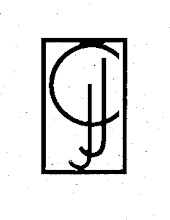One obvious difference between my old neighborhood and my new one is fences. Nearly every square inch of public and private property in my old ’hood was bordered by wrought iron. Even the parks and green spaces. It could feel claustrophobic and exclusionary.

Not so in the Horse Capital. Oh sure, in the back yards you’ll find fences with children or dogs inside. But not in the front. And not in the parks. Paper and mail carriers can deliver their goods for blocks and blocks without once having to open a gate.
Outside the city, two kinds of fences frame the landscape: plank and stone.
The traditional horse farm fence is wooden planking painted white; the contemporary version is darkly stained, making its upkeep less expensive. As simple as the fencing looks, it’s costly. According to one source, the white runs about $18,000 per mile and the dark runs $6,000. And there are hundreds upon hundreds of miles of the stuff here.
Alongside the qui
 ntessential planking that borders roadways, you’ll often see stone walls—no mortar, just carefully placed rock, one after the other, one atop another. Beautiful to behold. And complicated to repair. One careless driver can take down a whole section and if the property owner can’t afford to fix it, it becomes another bit of history lost.
ntessential planking that borders roadways, you’ll often see stone walls—no mortar, just carefully placed rock, one after the other, one atop another. Beautiful to behold. And complicated to repair. One careless driver can take down a whole section and if the property owner can’t afford to fix it, it becomes another bit of history lost.In a book I recently read, Buffalo for the Broken Heart, the author describes refencing his cattle acreage for buffalo. Unlike cattle, buffalo really do (and should) roam, so they need much larger pastures than cattle with much sturdier fencing. And though both cattle and buffalo fences may be made of the same basic materials, the construction and costs are quite different (for instance, the poles have to sink deep into the ground, requiring large machinery to do the digging). The first pasture of only 40 acres cost the author $5,000 in materials alone back in the early ’90s; labor was another story. And as soon as the first pasture was done, fencing for the hundreds of other acres had to be started. Not to keep anything out (as was the intent in the Windy City), but to keep the mammoth buffalo in. For once they step onto someone else’s property to graze, the welcome th
 ey receive is usually delivered by a rifle.
ey receive is usually delivered by a rifle.As they say on the range, “Good fences make good neighbors.”
I’m not sure what they say in my new neighborhood, but the lack of fencing here shows a refreshing openness and friendliness. At least, that’s what I’m choosing to believe.
This is part of an ongoing series regarding my transition from the Land of Lincoln to the Bluegrass State. For a list of previous articles in the series, type Stranger in a Strange Land into Lull’s search function on the right.
[Photos top to bottom from Blog N Kentucky, the Kentucky Land Sales Newsletter, and Jason Lindsey.]



No comments:
Post a Comment